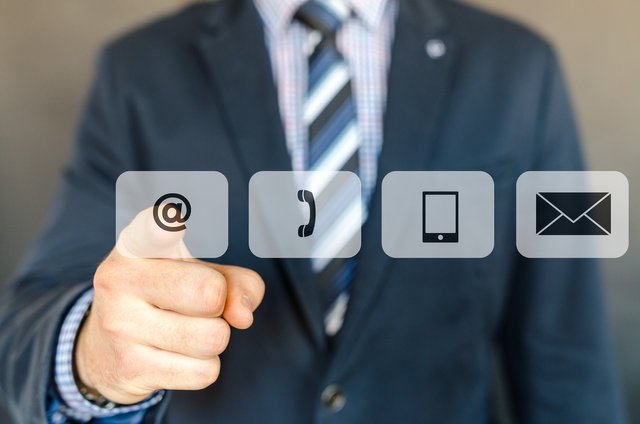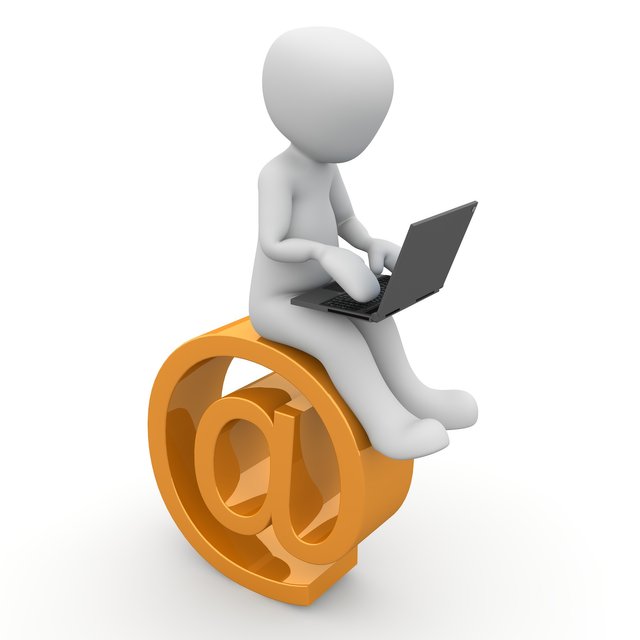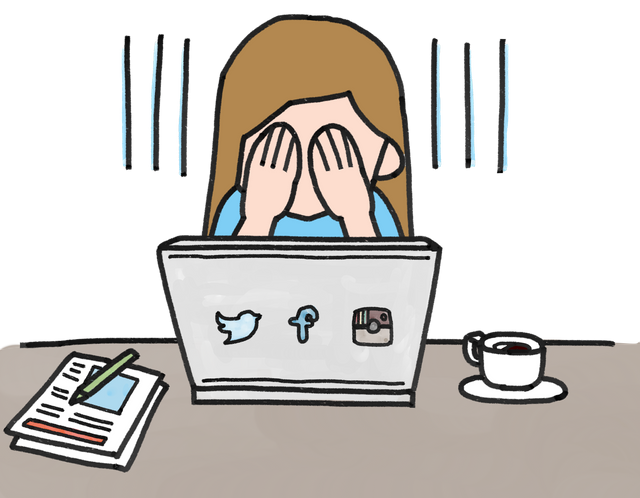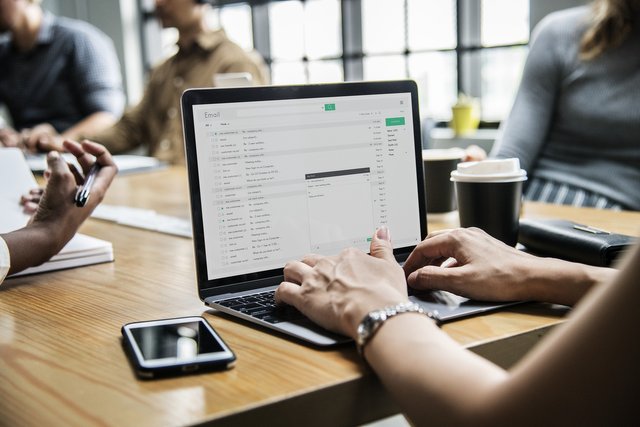The Basic Guide To Managing with Your Email More Viably
Regardless of whether you are a President, understudy, or consultant, email is something that we as a whole need to manage. However, rehearse clearly does not make flawless the same number of individuals still battle relentlessly to get to a void inbox. Email is one of the biggest wellsprings of diversion, and winds up squandering a ton of significant time.
Which is the reason we are so energetic about email. For some, email is a steady wellspring of stress that keeps them from doing their best work. It is a noteworthy issue that should be understood before they can like what they ought to do.
The best part about this work process is that it will work with pretty much any email customer or working framework. So whether you utilize Attitude toward a PC, the default email customer on your cell phone, or something like Postbox for the Macintosh, you can utilize this work process to reclaim your inbox and recover hours from your day.
To guarantee you get the most out of this email work process, there are three straightforward ideas you have to get it.

Image Source: pixabay
What is Inbox Zero?

The primary idea to get a handle on is called Inbox Zero. You may have heard the term inbox zero preceding, yet it's not only a void inbox. This is the final product we need to shoot for, yet Inbox Zero is significantly more than simply discharging your inbox. Because you have 0 messages in your inbox right presently doesn't mean you can remain there with any kind of consistency. You may have spent throughout the day wiping things out to arrive, or perhaps you just nuked your inbox on the grounds that you were so overpowered. Both of these situations may give brief alleviation, yet you haven't tackled the genuine issue. So we need to burrow somewhat more profound on the off chance that we truly need to comprehend what Inbox Zero truly resembles.
Inbox Zero is extremely a perspective. It's a feeling of control and quiet that originates from realizing that you are prepared for whatever life tosses at you. It's tied in with taking care of all the potential issues that can make you worry since you're stressed over what you may be neglecting to do. Email is a lineup for the day other individuals can compose on, however when you accomplish Inbox Zero you feel prepared for anything somebody may demand of you. You don't get shaken when your supervisor or associate requests that you accomplish something since you have a confided in framework set up so you can manage all that you have to do suitably.
To put it plainly, Inbox Zero is:
- Having the capacity to assume that the framework you've chosen to use to process email is working effectively and everything is recorded in the suitable place.
- Having a proficient procedure for managing every one of the contributions to your life.
- Assembling all the data you need to keep and every one of the things you need to do in a way that won't make you insane and having frameworks set up to put things away where they have a place.
Envision this situation. You just landed at the workplace and you're going to begin your day. You would prefer not to get occupied, so you take a shot at your Most Imperative Errand (MIT) before you browse your email. Quick forward a hour and you're done with your MIT. You're currently prepared to jump into your email customer and see what other individuals require from you. Rather than feeling restless what may sit tight for you, it doesn't worry you any longer. That new identification doesn't threaten you – it's only a futile number.
This perspective is evidence that you've truly achieved Inbox Zero. You have no uneasiness around email, the quantity of messages you need to process doesn't bother you at all. It's an indication that you have an email framework set up that you trust and that you feel sure utilizing it. That is truly what the idea of Inbox Zero speaks to.
This article will be your beginning stage on arriving. I have short video course which will demonstrate to you precisely proper methodologies to execute this on the off chance that you need to go much more profound, however this post will kick you off the present moment in the event that you need to get email inbox under control.
With Inbox Zero out the of the way, the second idea you have to comprehend is the Touch-It-Once standard.
What is Touch-It-Once?

 Image Source Pixabay
Image Source Pixabay When you contact something more than once, you wind up squandering a great deal of time. Have you at any point taken a gander at a bill more than once and suspecting you should pay it before you overlook once more? Shouldn't something be said about that instant message you've rehash different circumstances? I'm once in a while blameworthy of this myself. In some cases I'll get an instant message, read it and afterward say, "I'll answer to it later." You know what happens? I continue pondering that instant message again and again until the point that I at long last wind up answering (if by any means, in some cases I totally overlook and it would appear that I've disregarded them). This approach however is a misuse of mental aptitude, self discipline, and consideration. What I ought to do is answer immediately. With instant messages, it ought to be really clear in light of the fact that the messages are short.
Be that as it may, it's somewhat more convoluted with regards to email since we sense that we should answer to it later. However, it's significantly more essential that we apply this outlook to email in light of the sheer volume of email that we need to manage each day. Envision you read 10 messages and you choose sooner or later to answer to them later. That is 10 contemplations, updates and emphasize indicates for you manage it consistently you don't accomplish something with them.
That is a ton of superfluous pressure, and that is the reason the Touch-It-Once rule is so vital when you manage email. To take this significantly further, let me acquaint you with the 2-Minute Rule.
What is the 2-Minute Rule?
On the off chance that you've perused the book Completing Things (or any material on GTD), you've presumably known about this control previously. It's basic: at whatever point you need to accomplish something, in the event that it takes under 2 minutes to do, you ought to do it immediately. In the event that it takes longer than 2 minutes, at that point you should put it on your lineup for the day (or into your errand supervisor) and proceed onward to the following thing.This idea is particularly imperative with regards to managing email. In the event that you can process an email in under 2 minutes, it's for the most part better to do it immediately. Else, you should place it in your errand chief to manage later. Be that as it may, regardless of what move you make, the following stage is to get it out of your inbox so you don't need to settle on this choice about what to do with it more than once.
This is extremely critical. When you consolidate the Touch-It-Once guideline with the 2 Minute Lead (2MR), you have the 80/20 of taking care of messages effectively.
In the event that there's nothing else you gain from this post, simply recollect this straightforward equation. Regardless of whether you don't execute the email work process I'm going to indicate you and you just apply these two ideas (TIO and 2MR) despite everything you'll have significantly less email-related worry to manage.
This is the place email triage comes in. "Triage" is really a restorative term that began in the Napoleonic War. It is utilized to characterize the way toward deciding the need of patients' medications in view of their seriousness of their present wellbeing condition. Injured officers were immediately ordered into one of 3 classifications:
- The individuals who were probably going to live, paying little heed to what mind they got,
- The individuals who were probably not going to live, paying little respect to what mind they got, and
- Those for whom quick care may have a beneficial outcome in the result.
The essential takeaway as it applies to email is this: we need to make a framework that enables us to manage the really critical and vital messages proficiently, and everything else we need to put into the fitting holder to manage it later. Furthermore, that holder to manage it later ought to NEVER be your inbox! Your email inbox is totally unequipped for disclosing to you when something should be done (like an assignment director) and it's not made for finding records and connections effectively (like a reference document). That implies that on the off chance that you abandon it in your inbox, you need to experience the entire choice process and make sense of what the message is and what you should do with it by when each time you take a gander at it.
So we should take a gander at how to do that with the email work process itself.
The Email Triage Work process

 Image Source: Pixabay
Image Source: Pixabay (What's the rest of the 5%? The procedure we instruct in our email course that will enable you to find messages quicker when you have to accomplish something with them and the tips and deceives you have to truly enable you to confide in your framework on the off chance that you get a considerable measure of email. On the off chance that you truly need to take your email handling to the following level, you'll need to look at the course. However, what I'm going to demonstrate you is the larger part of what you have to know to get and keep inbox zero for the vast majority.)
In the event that the appropriate response is "Yes," at that point put the message in a reference document so you can think that its later when you require it, chronicle it and proceed onward to the following email.
This is the thing I found from working with individuals one-on-one to enable them to gain power of their email. I found that while Completing Things or GTD gave me a strong system for the initial 2 sorts of email, this third one is the one that made email move down in individuals' inboxes more than some other. So what's going on here? It's an email that you need to peruse later (numerous bulletins fall into this classification).
So how would you manage this kind of email? It's entirely simple.
Here's the manner by which to deal with data you need to peruse later so it doesn't heap up in your inbox:
- Once more, you open the email and ask, "Do I have to accomplish something?"
- In the event that the appropriate response is "Read it Later," at that point you have to send it to a Read-It-Later administration so you can read it later when you need to, file it and proceed onward to the following email.
So which Read-It-Later administration would it be a good idea for you to utilize? We prescribe Instapaper in light of the fact that it gives you an "email drop" address that you can forward messages to in the event that you need them to show up in your line for some other time. Pocket, the other famous Read-It-Later administration, doesn't have this component, which makes it inconceivable for this email work process.
One thing worth specifying here is that occasionally you would prefer not to answer immediately when you open an email – regardless of whether it will take you under 2 minutes to do as such. That is alright, you can change the work process above by supplanting the inquiry, "will it take under 2 minutes to process this email?" with the inquiry, "would I like to answer at this moment?" whatever remains of the work process can stay precisely the same.
As should be obvious, this is definitely not a confounded work process. Each time you get an email, you contact it once and utilize the 2-minute govern to figure out what to do with it.
Be that as it may, what influences this email work process to work is putting aside time to process your email. At the end of the day, you can't arbitrarily browse email for the duration of the day and apply this work process accurately. It may at present work, however it's profoundly wasteful in light of the fact that you miss the intensity of clumping. Preparing 25 messages on the double is 10x more proficient than handling 5 messages in 5 endeavors. When you do browse your email frequently, you'll end up undermining this work process as opposed to handling things totally and breaking both the Touch-It-Once standard and 2 Minute Manage it's based upon.
In a perfect world, you'd just browse your email once every day. Notwithstanding, this won't work for some individuals and rather we prescribe browsing email two times per day – once after you eat your frog, and some other time before you complete your workday. In the middle of is the point at which you do your high-esteem work.
Previously, I've picked 11 am and 4 pm as my email vacancies.
"Shouldn't something be said about… ?" – Much of the time Asked Email Inquiries

Now, you may have a few inquiries regarding the email work process. Here are the responses to the basic inquiries we get got some information about this work process.
I work in an organization where everybody anticipates that a quick reaction will an email. Does this still work for me?
Indeed, it just implies that you need to browse your email all the more regularly. Rather than twice day by day, perhaps it's 4 or 5 times each day. Perhaps it's consistently.In case you're in a part where email manages everything, for example, client administration or deals, this work process works similarly too in light of the fact that the key thing is that you have genuine feelings of serenity realizing that all email is dealt with appropriately. You've either answered to it immediately or it's on your lineup for the day (and from that point you can organize).
When you're in that part acknowledge that email manages your work. Eating your frog before anything else won't not make a difference to you on the grounds that everything at work is done through email. That is alright, simply comprehend that you're the special case. For a great many people, despite everything I suggest eating your frog before anything else and after that browsing your email.
Which email customer/application do you suggest?
This a subject that surfaces in our efficiency network, The Dojo, constantly. There are numerous email programs out there, yet here are a few top choices.For the Macintosh, there are two or three great alternatives. We prescribe Postbox, MailMate, or Airmail. On iOS, we prescribe Dispatch or Airmail.
For Windows, it's somewhat trickier yet we prescribe Postbox and Newton (particularly if utilize Todoist as your errand administrator).
Which lineup for the day application do you prescribe?
One thing I generally mull over is that the applications you utilize need to cooperate inside a biological system. Mix between applications is a key factor at whatever point I make an application proposal and utilize the applications myself.My own conviction is that it's trivial to utilize a lineup for the day application that doesn't coordinate with your email customer. A considerable measure of things you need to do will come through email so it bodes well that whichever schedule application or errand director you choose to utilize that it incorporates with your email customer.
In case you're utilizing an errand director that doesn't coordinate with your email customer, you wind up duplicating and moving assignments around constantly. It's a considerable measure retyping, revamping assignments that are out of adjust, and by and large there's a ton of contact. Does this sound natural? At that point you should need to rethink which assignment chief or email customer you utilize.
On the Macintosh, I prescribe OmniFocus. It's the most intense and it works easily with all email customers on the Macintosh.
Perhaps you loathe OmniFocus or you're as of now utilizing another undertaking administrator. Is it true that you are currently damned? No, by no means. This is what I suggest:
- See whether your present undertaking administrator coordinates with your present email customer. Simply look for "(your lineup for the day application) (your email application)" and see what shows up, e.g. "todoist postbox".
- On the off chance that there's a joining, awesome! Figure out how to utilize it and you'll be good to go
- On the off chance that there isn't a joining, reexamine either 1) exchanging your undertaking administrator or 2) exchanging your email customer that works with your errand supervisor. Of the two, exchanging email customers is most likely the less demanding alternative.
I have a great many new messages at the present time. How would I begin with this work process?
 Image Source: Pixabay
Image Source: Pixabay - Experience messages that have been sent over the most recent 30 days. Just process those. Regardless of whether it's in the hundreds, process those messages since they are the most critical to manage.
- Simply document anything more seasoned than 30 days.
You may feel awkward with this counsel, however here's the thinking behind this proposal: you aren't getting to those messages in any case! Basically if it's an imperative email, it'll return to you. It is possible that somebody will catch up with you or it'll some way or another grab your eye (which then you can utilize the pursuit capacity to discover an email). Something else, it's not sufficiently essential to warrant your consideration and it's excessively old, making it impossible to manage so you can securely chronicle those messages.
What do you do when you're sitting tight for an answer from somebody?
In the principal rendition of this work process, we prescribed an envelope called "Pausing" where you put all messages in that you're sitting tight for an answer. This works extremely well, however just in case you're taught and focused on utilizing it. The issue we've seen individuals have with this is they overlook that envelope exists or they neglect to check it as often as possible. It returns to the entire thought of "out of the picture, therefore irrelevant". The reason individuals leave messages in their inbox is on account of they can see it. They realize that when they login, they will see all that they require in their inbox.With an additional envelope, you need to know and advise yourself that you need to much of the time go in there and process messages. For a few people that is not an issue, but rather in view of client benefit messages, my involvement with customers and huge amounts of individuals we've conversed with… that additional organizer is regularly disregarded or overlooked.
The arrangement is to have those messages on your lineup for the day. In the event that you utilize OmniFocus you can utilize a particular setting, i.e. "Holding up For", to track those messages. In the event that you utilize another application and it doesn't utilize the possibility of settings (like most applications), you can change the name of the errand to begin with something like "Holding up For". For instance, "Sitting tight for Creeks to get back on a proposal" or "Sitting tight for Thanh to confirm Q4 Dates." You get extra focuses on the off chance that you utilize TextExpander bits for this.
How would you manage "sent messages" that require a reaction?
It's exceptionally straightforward: it's extremely simply one more errand on your lineup for the day. At whatever point you send an email and you're sitting tight for a reaction, you ought to make an undertaking and don't verify it until the point when the coveted result has come to.In the event that you've perused the response to the past inquiry, a similar standard applies here. Here's a case. I'll send an email to colleague Creeks with an inquiry on when the following blog entry will go live. I'll at that point make an errand "Sitting tight for Streams re: next blog entry date". Since I utilize OmniFocus, I'll allocate the setting "Sitting tight for – Mike" (it's a sub-setting of "Sitting tight For") so I can track it. On the off chance that need a reaction by a specific date, I'll set that as a due date. So on the off chance that I require a reaction inside two days from now, at that point that turns into the due date.
Now, Creeks and I can have numerous forward and backward messages. I may move the due date whenever in light of our discussion. Creeks may have said "Let me back to you on that in 3 days" at that point I could move my due date in light of that answer.
I won't put a checkmark on the errand until the point that the coveted result has been come to. When I know when the following blog entry goes live, at that point I'll confirm it.
Be that as it may, there's an ever better approach to do this with a SaneBox subscription.
SaneBox has an exceptional envelope called "SaneNoReplies" which demonstrates to all of you the messages that never got a reaction in one place. What's more, in the event that you needed the email to fly into your inbox naturally after a set period with no answer, you can utilize the SaneReminders include. You should simply include something like "[email protected]" in the BCC field and SaneBox will take the message back to your inbox in multi week, yet just on the off chance that you don't get an answer. On the off chance that the individual replies, the update leaves.
This looks incredible yet I get over a hundred messages every day. Wouldn't this add excessively rubbing to my work process? I'm perplexed I'll be investing more energy overseeing email than completing stuff.
The most ideal approach to accelerate handling an expansive number of messages is to set up email standards or channels. The procedure is distinctive relying upon the application and administration you choose to utilize, yet the fundamental standard is this: Let your email server or customer naturally pre-sort your messages into heaps so you can experience them all the more rapidly. For instance, you could set up an email decide or channel that gathered every one of the messages that you are CC'd on (that you most likely don't have to peruse altogether). Or on the other hand you could set up a channel for every one of the messages that contain "Withdraw" so you can trim down the quantity of pamphlets and offers you get.Additionally remember that the more email you get, the more imperative the idea of triage moves toward becoming. Since you won't have the capacity to invest a lot of energy with each message you get, you have to rapidly recognize the ones that will require your consideration and approve of disposing of everything else that isn't essential.
What is your opinion about browsing email on your telephone?
On the off chance that you can escape with, don't do it. The cell phone is definitely not a decent device for perusing or answering to message. The little console makes it simple to mistype, which influences you to look amateurish, best case scenario and like a trick best case scenario. Your PC is considerably more productive.On the off chance that you should utilize your cell phone for email, it's best to utilize it for triaging. We clarified triaging up above, yet we can adjust this approach marginally and utilize swipe motions to rapidly send messages to the fitting spot. While browsing email on your cell phone, you should separate your messages into one of three classes:
- Messages that will have a positive result regardless of when we react,
- Messages that will have a negative result regardless of when we react, and
- Messages that with a quick reaction may have a beneficial outcome in the result.
Your cell phone fits into this triage similarity consummately on the grounds that it enables you to make a move when required whenever. So ideally, you would just get notices on your cell phone for something that was totally dire. You could send a fast answer, at that point return to what you were doing. You would have the capacity to feel sure that each notice you got was vital on the grounds that you would have them set up with the goal that you were NEVER told of anything non-essential. The issue for a great many people is that they never try to tame their warnings on their cell phone. This influences them to feel like they have to check everything the time. Since even one missed warning or critical email could have a negative effect, there is strain to take a gander at each and every thing that comes in. This is the genuine motivation behind why the normal American to opens their cell phone more than 180 times each day, and opens the way to a torrent of potential diversions and intrusions. Accordingly, you need to kill notices for everything with the exception of the most essential messages you get.
I am an "organizer individual". Does this mean you don't prescribe utilizing organizers in messages?
That is right – I don't prescribe that you utilize envelopes to store your messages. any longer. Here's the reason:On the off chance that you have customarily recorded everything deliberately into envelopes in light of customer or undertaking, this might be troublesome. It can take a short time to come to the heart of the matter where you truly trust your capacity to find that needle in the pile. Be that as it may, with the innovation based instruments accessible to us today, seeking is certainly the most productive approach to discover what you're searching for. Truth be told, IBM completed an examination where they found that individuals who hunt down messages discovered them more rapidly than the individuals who discovered them by means of envelope based documenting frameworks by around 15s all things considered, and that didn't consider the extra choices you need to make when recording the messages in any case. You're unquestionably going to need to get the hang of seeking and there are some essential inquiry rules that will enable you to discover what you're searching for considerably quicker.

Image Source: Pixabay
Conclusion
In the event that you need to take your email handling to the following level, look at Inbox Detox. In this 5-Step video course arrangement it will demonstrated to you the generally accepted methods to oversee, keep up, and tidy up your inbox… and remain there… without stressing or passing up a major opportunity for any critical messages… in only one evening.References
Instapaper
Pocket
Postbox and Newton
OmniFocus
SaneBox
IBM study
5-Step video course series
Hello! I find your post valuable for the wafrica community! Thanks for the great post! @wafrica is now following you! ALWAYs follow @wafrica and use the wafrica tag!